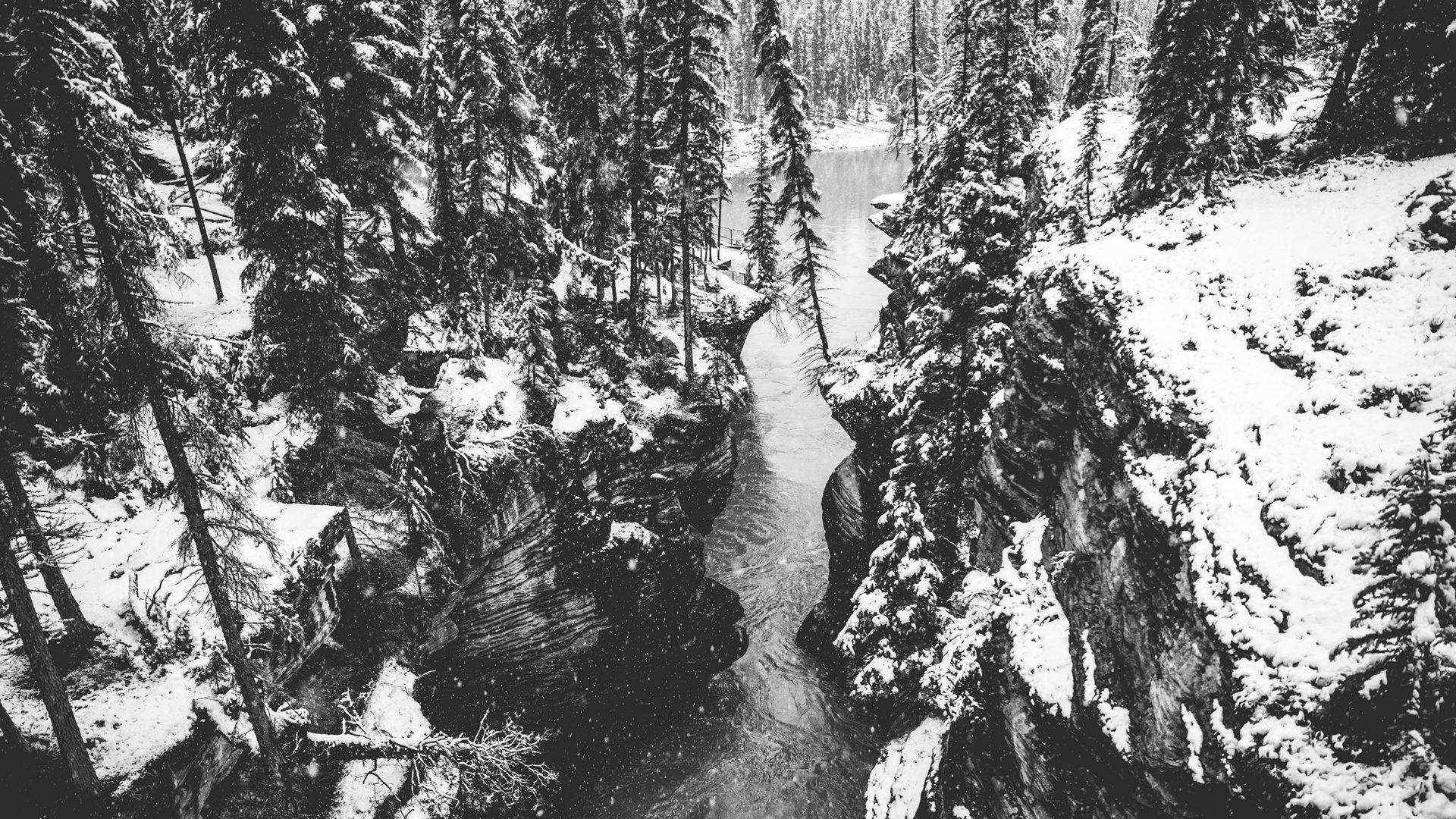Field Trip 6: Lantzville Green Shores and Green Houses
Introduction
On March 21, 2024, the class of Geol 312 toured Green Shores at Huddlestone Beach (Lantzville) and Pipers Lagoon (Nanaimo), on a windy, beautiful, early Spring day. At both stops, we toured around the area, observing various ways homeowners have ‘protected’ their property from erosion of ocean tides and waves due to climate change-induced sea level rise. This field trip highlighted the importance of keeping land the way we found it and shoreline remediation such as “Green Shores for Homes”. Additionally, this field trip introduced ‘Green Buildings’ and the Passivhaus concept.
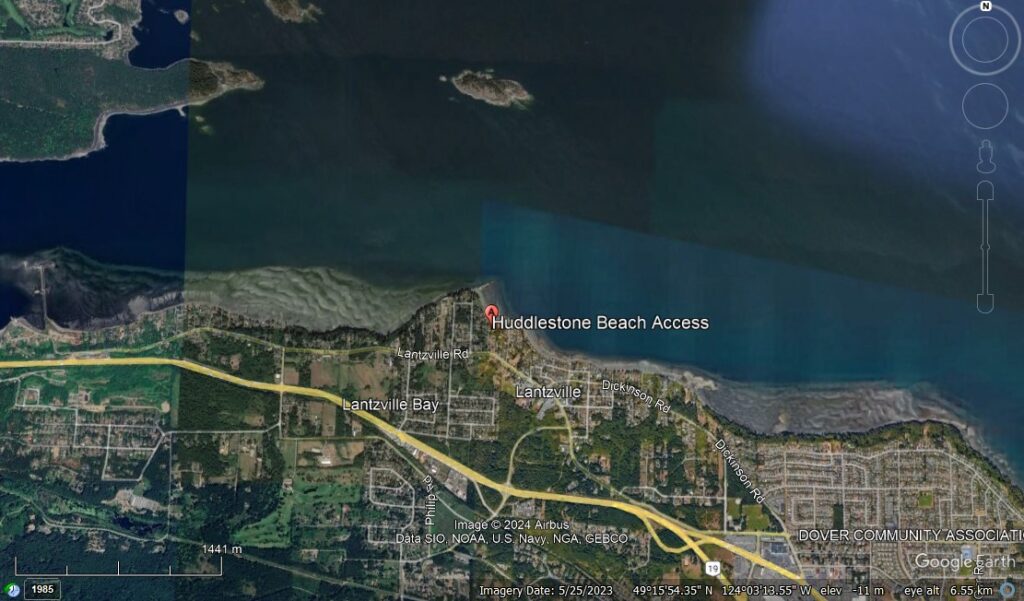
Figure 1: Aerial photo of Huddlestone Beach Access in Lantzville. Photo from Google Earth Pro.
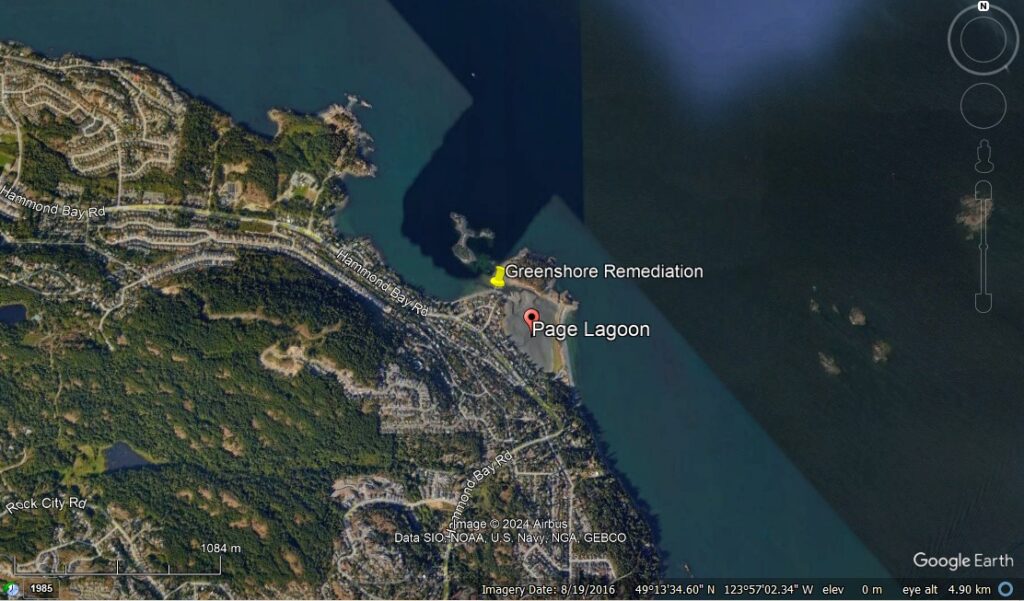
Figure 2: Aerial photo of Pipers Lagoon (also referred to as Page Lagoon) and the Greenshore Remediation house highlighted by the yellow thumbtack. Photo from Google Earth Pro.
Background
The City of Nanaimo published a report in 2019 outlining their Sea Level Rise Study for Nanaimo, Saysutshun Island, Protection Island, and Gabriola Island. This study includes wave effects and mapping of the 200-year FCL (Flood Construction Level) for the specified years, 2018, 2050, and 2100. Unfortunately, the document excludes our first stop on the field trip, Huddlestone Beach in Lantzville, but the information will be similar/if not the same to what is experienced there. Notably, this study includes updated Sea Level Rise amounts for 2018, 2050, and 2100, which are +0.06m, +0.38m, and +0.88m respectively. As the East coast of Vancouver Island is still experiencing uplift after the last glacial event, these amounts will be -0.02m, -0.08m, and -0.17m respectively less than the above amounts. These numbers are still high, even with the adjustment, and do cause concern, especially for properties/areas that are 1m or less above high tide level now. Additionally, the Sea Level Rise Study includes Storm Surge levels for 2018, 2050, and 2100. These maps are below in Figure 3.

Figure 3: 2018, 2050, and 2100 maps of maximum local storm surges for the Nanaimo area. Photos taken from Sea Level Rise Study, City of Nanaimo (2019).
Considering the above information, the more positive changes we (society) make today to alter climate change effects and sea level rise, the better, especially when considering shorelines. As sea levels rise, the areas where we have altered the shorelines to an artificial ‘protection’ for residential development will be affected, which can cause more pollutants into the ocean, disturbing natural ecosystems, as well as it’s not entirely necessary. To protect your home is one thing, but as we’ll see later in this post, much of the artificial shoreline alterations are ‘protecting’ a yard or garden that would be slowly eroded if it were up to nature. And if you’re going to live right on the ocean, this is something that should be expected and accepted, instead of disturbing natural ecosystems. This is where the program, Green Shores for Homes stemmed from, which is a program that focuses on positive steps to reduce the impact of residential development on shoreline ecosystems and helps waterfront homeowners restore natural shorelines (Green Shores for Homes, 2015). Alongside Green Shores for Homes, Passivhaus has a similar idea but within building designs. Passivhaus is the idea to create Green Buildings that are built for energy and cost efficiency, reducing carbon emissions in households and public buildings (Passivhaus, 2012).
Site Visit Overview
Starting at Huddlestone Beach in Lantzville, we walked along the beach to see 3 different shoreline protection techniques that homeowners are trying. The first technique, seen below in Figure 4, is a 70-80m long and 1m high concrete wall with a drainage hole. The drainage hole helps relieve water pressure behind the wall. As seen in the image, there’s discolouration a third up, which indicates the high tide line. This wall definitely protects the homeowner’s property, especially as sea levels continue to rise, but eventually, the wall won’t be high enough to protect it from the high tides. Also, the wall just isn’t natural and disrupts the natural environment the shoreline was in before the housing development. For effectiveness, this solution scores high but impacts the environment far too much. 4/10 method.
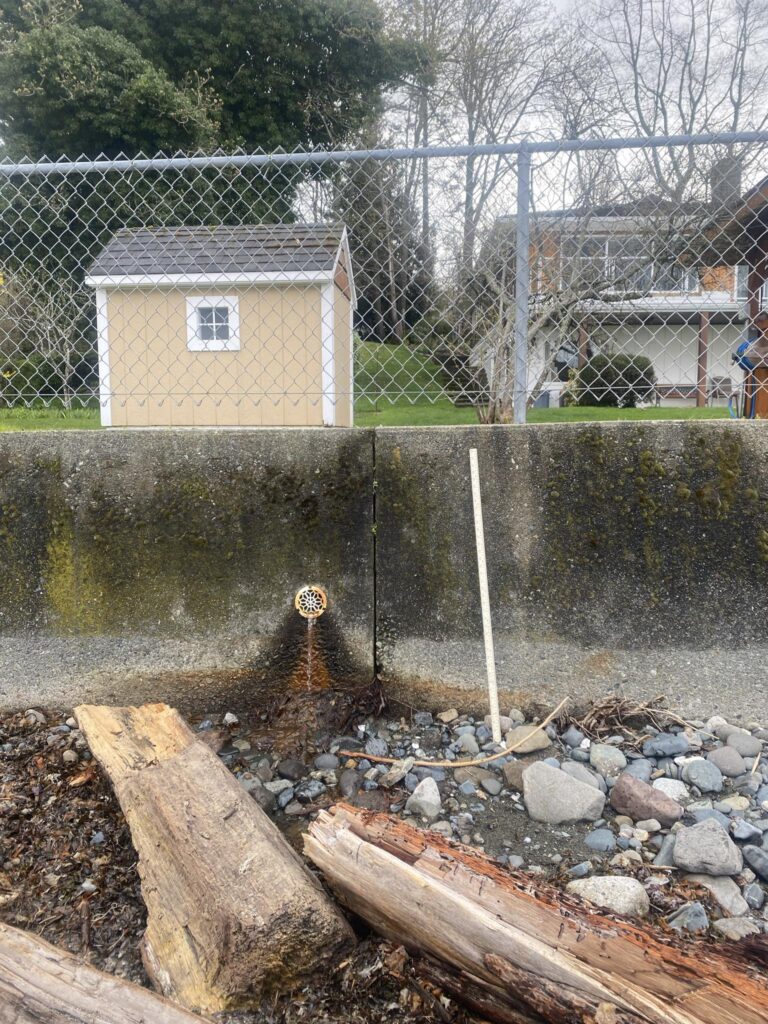
Figure 4: Shoreline protection technique found at Huddlestone Beach, Lantzville.
Not far from our first stop, a homeowner has used riprap walls to protect their property. This technique can be seen in Figure 5 below. The riprap is about 3-5m high and extended for about 15m. Behind this, there was an older shoreline protection method, another concrete wall made out of concrete and cobbles. This is seen in Figure 6. The riprap method isn’t as invasive and is a bit more natural than the concrete walls. However, residents still had to truck in materials to create these and it still is not natural. The riprap wall scores a 6/10 (a bit better than the concrete walls).
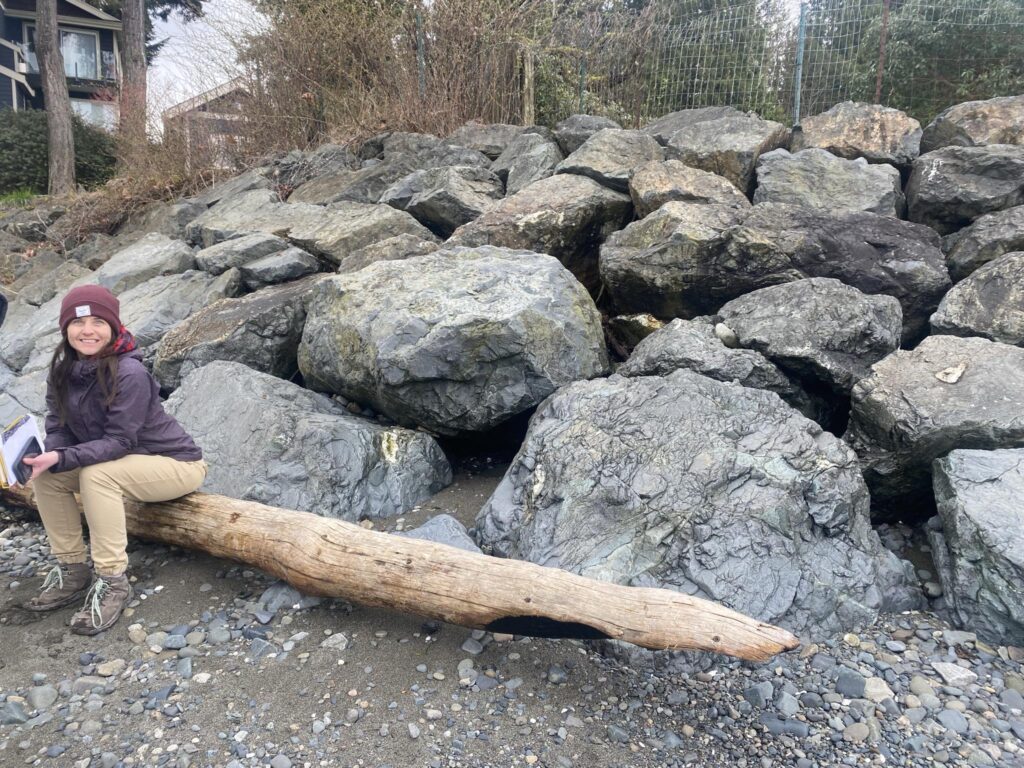
Figure 5: Riprap wall along the beach with Fanny as image scale.
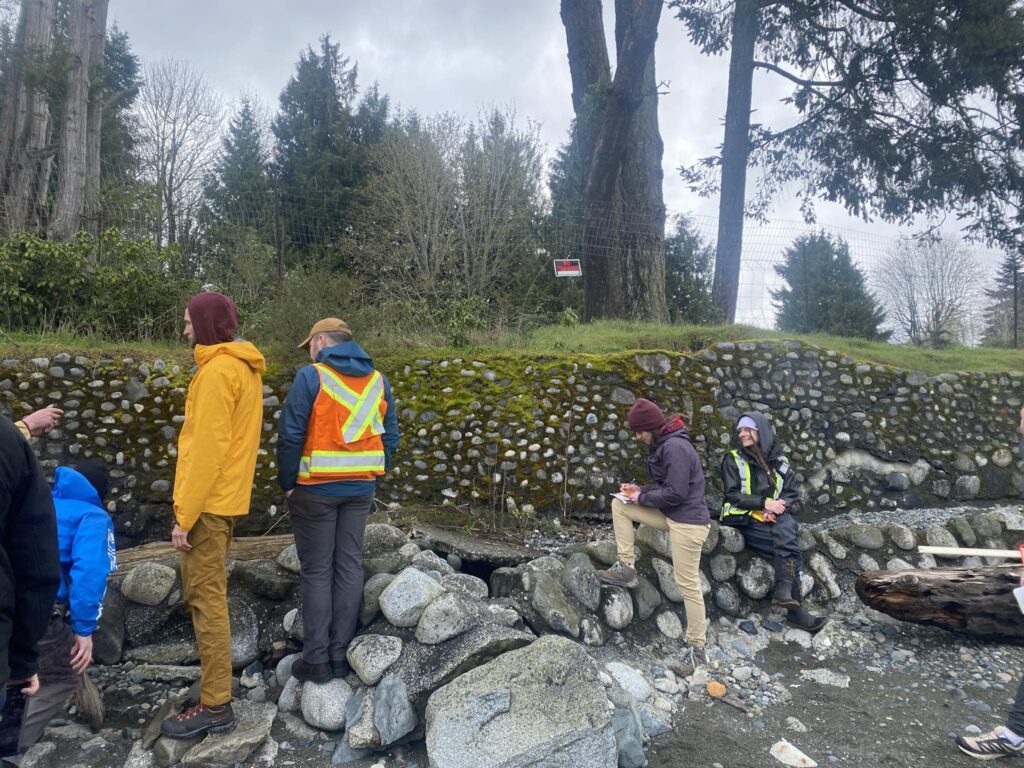
Figure 6: Concrete wall made of concrete and cobbles behind more recent riprap.
Further down the beach, residents seem to have implemented a much more environmentally friendly shoreline protection system of driftwood and smaller boulders, Figure 7. These properties don’t have a scarp where it meets the shoreline, which implies it has either followed a much more natural way than the other 2 examples and/or there was less sediment load here to begin with. In these areas, it is still noticeable where the high tide line hits, and the driftwood of course cannot stop water seeping into the properties, but it does seem to support a much healthier ecosystem. Here, natural bushes and plants can grow without infringing concrete walls. 7/10.
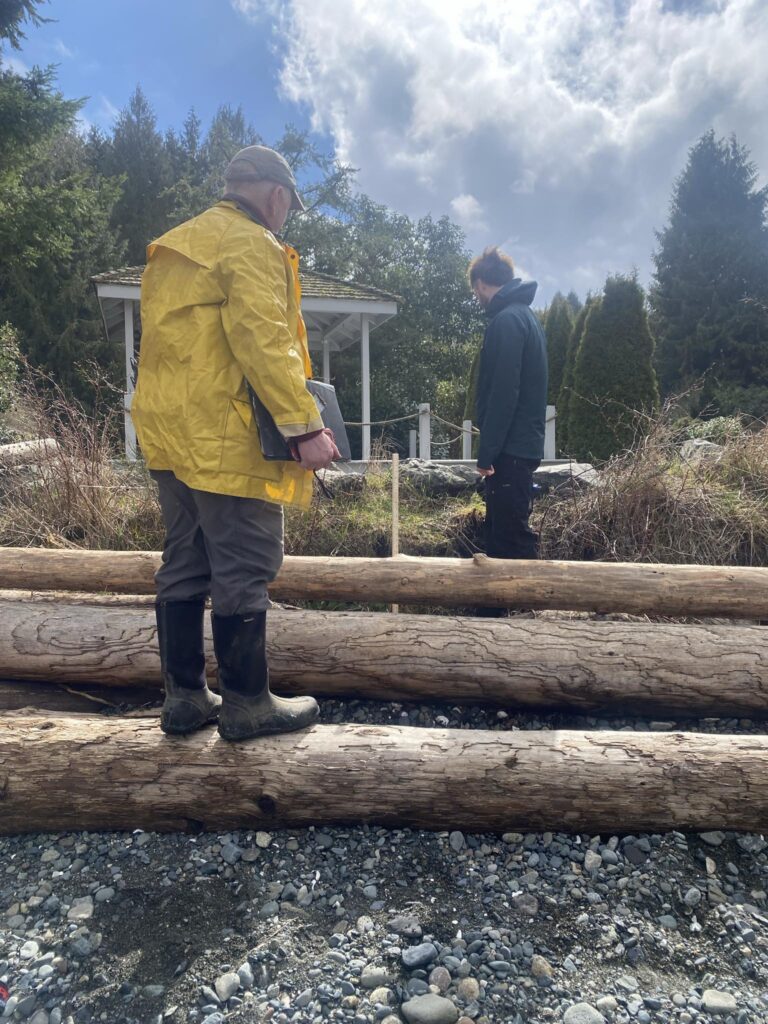
Figure 7: Driftwood logs and smaller boulders (not visible) protecting the shoreline. Tim and Jake for scale.
On our way back to the bus, a resident came up to the group and began telling us some history of the area and how things have changed over the years. Unfortunately, I was fascinated by the rocks on the beach and did not pay much attention, however, I regret that now.
From Huddlestone Beach, the class then went to Pipers Lagoon to see an example of a Green Shore home. The remediation process, as explained by the Stewardship Centre for BC, focused on removing the bulkhead and restoring the foreshore with natural materials and native vegetation to stabilize against erosion and create shoreline habitat. Figure 8 below has a before and after of the property. The remediation of the property helps support the various species that live on this land, including birds and the Garry Oaks. I give this site an 8/10.

Figure 8: Before and after of home along the shoreline in Pipers Lagoon, Nanaimo.
Concluding Comments
Overall, I found my experience on this field trip extremely interesting and I don’t think I will look at waterfront properties the same again. Homeowners who live along shorelines have a lovely view, but also a big responsibility to the environment. The homes we saw along Huddlestone Beach have been there for likely over 20 years and since then, the sea level has no doubt risen, as we can see from the scarps of the properties. Perhaps, when their shoreline protection methods were implemented, the long-term effects on the ecosystem were not taken into consideration, or sea level rise/fall wasn’t taken as seriously. However, now we know the effects and sea level rise are taken much more seriously. For this reason, I think it should be implemented that shoreline properties have to be remediated. Sea levels will rise up to 30 cm in the next 30 years, which will be most unfortunate for these beautiful properties, but that doesn’t mean the ecosystem has to be affected more. The house at Pipers Lagoon is a beautiful example of this.
References
Passivhaus Trust, 2012. https://www.passivhaustrust.org.uk/what_is_passivhaus.php
Sea Level Rise Study, 2019. City of Nanaimo. https://www.nanaimo.ca/docs/departments/environmental-documents/sea-level-rise-study-(2019).pdf
Green Shores, Case Studies. Pipers Lagoon, City of Nanaimo, British Columbia. (n.d.). Stewardship Centre for British Columbia. https://stewardshipcentrebc.ca/pipers-lagoon-city-of-nanaimo
